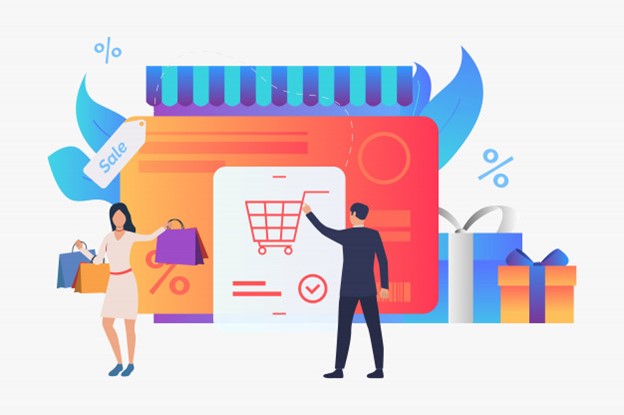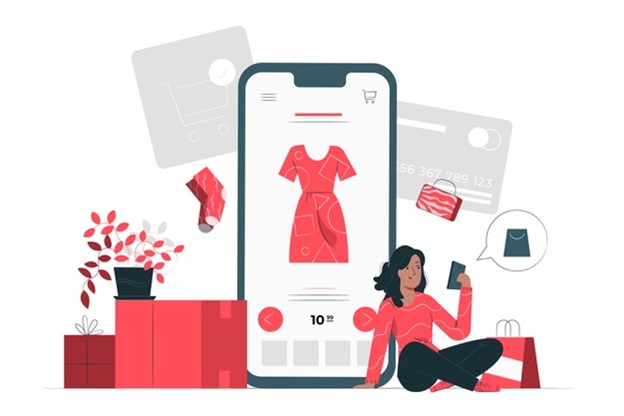When it comes to being successful in the eCommerce world, the phrase “Build it and they will come” definitely does not apply.
The opportunities in the eCommerce sector are virtually countless. According to Statista, retail eCommerce sales will reach $4.2 trillion this year, which is up from $3.5 trillion in 2019. So, how do you get the maximum share from this pie?
If you’re serious about growing your eCommerce store, you need to have a strategy in place. In this article, we are discussing 6 simple but effective strategies to help you grow your online store.

1. Use Social Media
In this day and age, you can’t afford not to be on social media. Why? Let’s look at some numbers:
- More than 85% of online shoppers believe that social media helps them make a shopping decision.
- 30% of consumers would make purchases directly through social media platforms.
- 40% of merchants use the power of social media to generate sales.
- 1 in 4 business owners is selling through Facebook.
It’s evident that in recent years social media has become a crucial influencer of online shopping behavior and presents a great opportunity for online stores to attract, engage, and convert a huge audience.
So, how do you use social media to drive traffic to your store and increase the number of customers? The possibilities are endless, from using Instagram Stories and shoppable posts to posting live stream videos and user-generated content. Experiment with different tactics to see which ones work best for you.
If you want to make the most of social media, make sure to use a good social media marketing tool. Today, there are lots of social media management tools that can help you skyrocket your online business and get tangible results.
2. Personalize Your Content
With big players such as Netflix and Amazon leading the way, personalized content is a hot trend that every eCommerce store must adopt. And for a good reason – 80% of consumers say they’re more likely to buy from businesses that show them relevant products.
Here are a few criteria you need for effective content personalization:
- Demographic data including gender, age, location, etc.
- Past interactions with your site
- Search history, declared interests, and prior buying decisions
- Time of visit (time of the day, month, season).
Amazon has really mastered content personalization. From shipping information based on the customer’s location to product recommendations, each Amazon user sees an online store with their favorite products.
3. Fix Any UX Issues
If you’ve noticed that your sales are reducing and you don’t seem to be attracting new customers, there might be some serious UX issues on your website. User experience is an extremely important factor – according to Forrester Research, every $1 invested in UX can yield a $100 return. So, making a few informed changes to your UX can help optimize conversion rates and provide an impressive ROI.
The discipline of user experience is broad, but ultimately has the goal of creating an experience that makes customers happy, or at least meets their expectations and doesn’t frustrate them.
The very foundations of UX are built upon knowing your target audience. This doesn’t mean making assumptions about what they want or expect, but actually doing the research to provide evidence that supports your understanding. Once you have enough information, you’ll be able to optimize your site for the goals they have and the journeys they undertake.
4. Upgrade Your Branding
A brand is more than just a logo, brand name, a catchy tagline, or a typeface – it’s more of a set of feelings and associations that your customers have about your brand. It’s the unique personality of your business and the first thing that comes to mind when people hear your company’s name.
Building a strong eCommerce brand is crucial for business growth. Once customers start to recognize your brand, they’ll be more likely to choose you over the competition and become loyal buyers. To streamline this process, consider partnering with an eCommerce branding agency that can help put your business at the forefront of your industry.

5. Offer Outstanding Customer Service
If branding is all about your customers’ perception of your brand, then customer service might be the best place to start. Make sure your focus is always on your customers and invest in understanding how they behave and what they want.
If you already have a customer service team, make sure that the service they provide is personalized. In addition, be sure to answer every question and complaint that comes your way, whether through live chat, phone, or on social media. In fact, according to live chat stats, live chat costs businesses up to 33% less than implementing phone support and can boost conversions by 20%.
Responding quickly is the best way to build a positive perception of your brand in customers’ minds.
6. Make It Easy for Customers to Make Payments
Imagine a customer arrives at checkout ready to spend tons of money only to realize you don’t offer their preferred payment option. To avoid such scenarios, make sure to make it easy for your customers to make payments.
Besides allowing them to pay with their credit or debit cards, you should also offer alternative payment methods like PayPal and Apple Pay. Implementing gift cards and cryptocurrencies is also a great way to enable more people to make purchases on your website, especially those that are wary of sharing personal info.
Final Thoughts
To grow an eCommerce business, you need more than just a website. Growing an online store requires lots of effort, determination, and patience.
Don’t wait until your bounce rate increases or sales begin to drop and start making changes now. By following these 6 simple tips, you’ll beat your competition and grow your eCommerce business faster.

